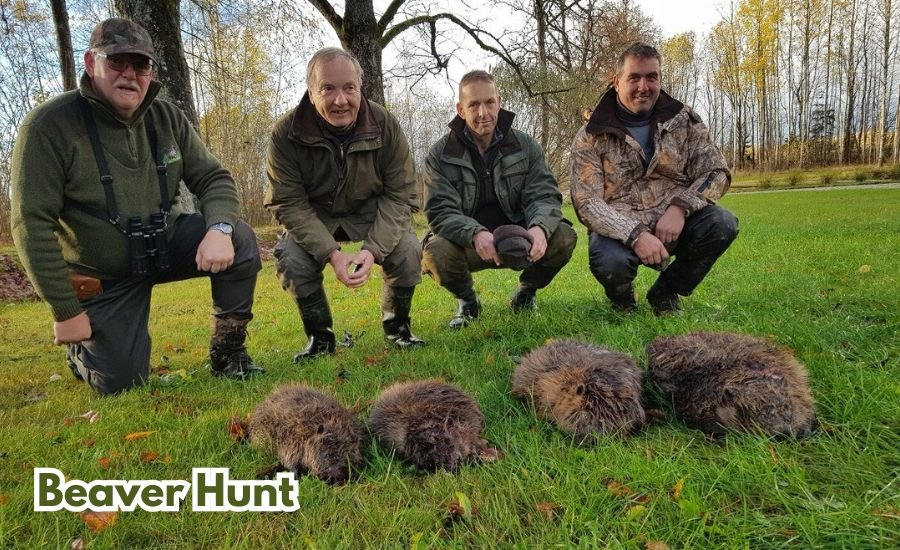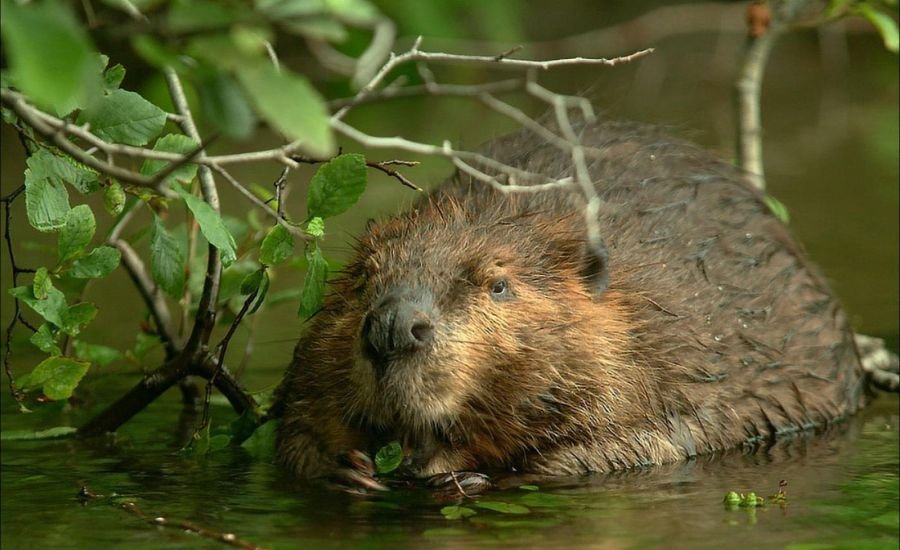Beaver hunt is exciting for anyone who loves nature and the outdoors. This type of hunt is all about spotting beavers in their natural habitat. Beavers are fascinating animals, known for their strong teeth and building skills. If you love animals and want to learn more about beavers, a beaver hunt could be the perfect adventure.
During a beaver hunt, you will explore forests and streams, searching for signs of these busy creatures. Beavers build dams and lodges, and their work can be seen everywhere. A beaver hunt is not just about finding the animals; it’s also about learning about their environment and how they live. It’s a great way to enjoy the outdoors and appreciate nature!
What is a Beaver Hunt and Why Should You Try It?
A beaver hunt is an exciting way to explore nature and learn about the fascinating creatures known as beavers. This hunt is about finding beavers in their natural habitats, like forests or near streams. These creatures are known for their ability to build dams and lodges, which makes them a unique part of nature. Going on a hunt allows you to see these animals up close and discover how they shape their environment.
Many people enjoy beaver hunts because they are both fun and educational. You will learn a lot about these animals’ behaviours, what they eat, and how they build their homes. Participating in a beaver hunt allows you to spend time outdoors, connecting with the environment around you. Whether a nature lover or just curious about wildlife, a beaver hunt is a great way to have a new adventure.
Top Places for a Beaver Hunt Adventure

Here are some of the best destinations where you can experience an exciting beaver hunt adventure:
1. Northwest Territories, Canada
- Known for its vast wilderness and abundant beaver populations.
- Offers stunning landscapes with rivers and wetlands perfect for beaver spotting.
- Local guides are available for a safe and thrilling hunting experience.
2. Alaska, USA
- A prime location for outdoor enthusiasts seeking beaver hunts.
- Features endless waterways and remote areas for a true wilderness experience.
- Beavers thrive in the state’s rich aquatic ecosystems.
3. Minnesota, USA
- Nicknamed the “Land of 10,000 Lakes,” this state is ideal for beaver hunting.
- Offers diverse habitats, including rivers, marshes, and lakes.
- Hunting here is regulated, so ensure you have the proper permits.
4. Maine, USA
- Known for its lush forests and numerous waterways.
- Provides an excellent chance to spot beavers while exploring the scenic outdoors.
- Local outfitters often offer guided trips for beginners and experts alike.
5. Quebec, Canada
- Home to vast wetland areas and a thriving beaver population.
- Ideal for a mix of hunting and sightseeing in nature-rich settings.
- Offers opportunities to learn about sustainable wildlife management.
6. Montana, USA
- Famed for its rugged terrain and crystal-clear streams.
- Beavers are plentiful in the state’s pristine ecosystems.
- Hunting here is perfect for those seeking a quiet and serene adventure.
7. British Columbia, Canada
- A stunning location with rivers and ponds ideal for beaver activity.
- Provides a chance to explore the beautiful Canadian wilderness.
- The province has strict wildlife laws, so plan accordingly.
Always check local hunting regulations and obtain the necessary licenses before planning your beaver hunt adventure.
The Best Time to Go on a Beaver Hunt
Timing plays a significant role in having a successful beaver hunt. Beavers are most active at dawn and dusk. This is when they come out to gather food and work on their dams. If you plan your hunt early in the morning or just before sunset, you’ll have the best chance of seeing these busy creatures in action. Going at the right time increases the excitement of spotting a beaver and observing its natural behaviour.
The seasons also affect beaver activity. In the winter, beavers are less active, staying in their lodges to stay warm. However, beavers are busy building and repairing their dams in spring and summer, making this a great time to go on a hunt. Fall is another good season because the weather is incredible, and the beavers prepare for winter. Planning your hunt according to the best seasons is essential to maximize your chances of success.
How to Spot Signs of Beaver Activity
One of the most essential parts of a beaver hunt is recognizing signs of their presence. Beavers are known for their unique ability to cut down trees and create dams. You can look for trees with sharp, diagonal cuts on the trunks – marks left by beavers as they gather wood. They usually cut trees with their strong teeth, leaving clear evidence behind.
Another sign of beaver activity is their dams. These structures are built from sticks, mud, and rocks to block water flow. If you see a dam in a stream or river, it’s a strong sign that beavers are living nearby. Their lodges are also a key sign to look for. These lodges are often made from branches and are built in the middle of the water, providing the beavers with a safe home. Looking for these clues can help you track down beavers during your hunt.
Gear You Need for a Successful Beaver Hunt

Having the right gear is essential when going on a beaver hunt. The first thing you need is a good pair of binoculars. This allows you to spot beavers from a distance without disturbing them. A camera can also be helpful if you want to take pictures of the beavers in their natural habitat. It’s essential to be respectful of wildlife, so make sure to stay quiet and keep a safe distance while observing.
Another helpful item is a map of the area where you’re going. Knowing the landscape will help you find places where beavers are more likely to live. Wearing comfortable shoes is also key since you may walk through forests or wetlands. Bringing a notebook to jot down any interesting observations during your hunt is also a good idea. With the right tools, your beaver hunt will be more enjoyable and successful.
What to Look for During a Beaver Hunt
Knowing what to look for is essential when you’re on a beaver hunt. You should also watch for their tracks beside the signs of beaver activity like cutting trees and dams. Beavers leave footprints near the water, especially along muddy areas. These footprints can guide you to their lodges or other places where they live. Watching the water closely can also help, as beavers often swim or dive to escape predators.
Listening carefully is another essential tip. Beavers make a distinct tail slap sound when they feel threatened. You might hear the tail slap as a warning if you’re quiet and patient. It’s a sign that beavers are nearby and may be preparing to swim away. Keeping your eyes and ears open during a beaver hunt will help you catch a glimpse of these fascinating creatures.
The Role of Beavers in Nature: A Fun Fact During Your Hunt
While hunting for beavers, it’s important to remember that they play a crucial role in nature. Beavers are often called “ecosystem engineers” because their activities shape the landscape. By building dams, beavers create wetlands that provide homes for animals like fish, birds, and insects. These wetland areas also help improve water quality by filtering out pollutants.
Beavers also help prevent flooding. When they build dams, they slow down the flow of water, which can reduce the impact of heavy rain or snowmelt. Their lodges provide shelter for various animals, including birds and small mammals. Observing beavers during your hunt lets you witness how their hard work benefits the entire ecosystem.
How to Be Safe on a Beaver Hunt

Safety is paramount when going on a beaver hunt. Beavers live near water, so it’s crucial to be careful near streams, rivers, or ponds. Always watch your step to avoid slipping on rocks or mud. Stay back from the edge if you’re near a dam, as the ground may be unstable. Wearing waterproof boots will help keep your feet dry and protect you from sudden drops.
It’s also important to dress appropriately for the weather. If you’re hunting in colder months, wear layers to stay warm. Wearing a hat and sunscreen during summer can protect you from the sun. If you’re hunting in an area with wild animals, be cautious and avoid getting too close to other creatures. Bringing a first-aid kit is a good idea in case of minor injuries. Staying safe ensures that your beaver hunt is enjoyable and free from accidents.
Discovering Beaver Dams During Your Hunt
Beaver dams are one of the most exciting discoveries during a beaver hunt. These dams are built by beavers to block water and create a safe, calm environment for their lodges. When you find a dam, you can learn much about the beavers’ behaviour and how they work together to build their homes. The dams are made from sticks, mud, and other natural materials, which the beavers gather from their surroundings.
It’s incredible to see how beavers work as a team to create such large structures. Sometimes, dams can be several meters long, and they can completely change the flow of a river or stream. When you find a beaver dam during your hunt, observe how the water flows around it. You might also spot some beavers swimming nearby, working on their dams or relaxing. Discovering a beaver dam is a highlight of any beaver hunt.
The Excitement of Seeing a Beaver on a Hunt
One of the most thrilling moments during a beaver hunt is spotting a beaver in the wild. These animals are known for their busy, hardworking nature, so seeing one in action can be exciting. Beavers are usually shy and will swim away quickly if they sense danger, so it’s essential to be patient and quiet during your hunt.
If you’re lucky, you might see a beaver building its dam or swimming around in the water. Watching a beaver at work is a rewarding experience, as it shows how important these animals are to the ecosystem. Their large, flat tails and webbed feet make them excellent swimmers who can dive underwater for long periods. Spotting a beaver during your hunt will make all your efforts worthwhile.
What You Can Learn from a Beaver Hunt
A beaver hunt isn’t just about finding these animals – it’s about learning more about nature. Through the hunt, you will discover how beavers impact their surroundings. You will see firsthand how they build their homes and why their work is essential to other wildlife. It’s also an opportunity to learn about the plants and trees that beavers rely on for food and shelter.
During a beaver hunt, you might also learn about other animals with the same habitat. For example, you may spot birds, fish, or small mammals living near the beaver’s dam. Understanding the relationship between beavers and their environment will deepen your appreciation for nature and wildlife. Every beaver hunt is a chance to discover something new.
A Guide to Ethical Beaver Hunting: Respecting Wildlife
While a beaver hunt can be fun and exciting, it’s essential to approach it ethically. Ethical hunting means respecting wildlife and their habitats. This includes following local laws about wildlife protection, staying quiet during your hunt, and not disturbing the animals. Always observe beavers from a distance without trying to touch or capture them.
It’s also essential to leave no trace of your presence. Stick to marked trails and avoid damaging the environment around you. Remember, beavers play an important role in nature, and protecting their habitats for future generations is essential. By practising ethical hunting, you can enjoy your beaver hunt while also helping to preserve the natural world.
Conclusion
Beaver hunting is an exciting way to explore the beauty of nature. Whether you’re visiting the forests of Canada or the rivers in the USA, there are many great places to start your adventure. These spots are perfect for learning about wildlife, enjoying the outdoors, and having fun. Always remember to follow the rules to keep the environment safe and healthy.
Before you head out, make sure you have everything you need, like permits and proper gear. Taking a guide along can make your trip even better, especially if it’s your first time. Beaver hunting is not just about the hunt—it’s about spending time in nature and creating memories that last a lifetime.
Do You Know: Therian
FAQs
Q: What is the best time for a beaver hunt?
A: The best time is usually early spring or late fall when beavers are most active.
Q: Do I need a license to hunt beavers?
A: Yes, most places require a hunting license and sometimes additional permits.
Q: Can kids go on a beaver hunt?
A: Yes, kids can join with adult supervision, but safety should always come first.
Q: What gear is needed for beaver hunting?
A: You’ll need waterproof boots, warm clothing, a suitable weapon, and bait.
Q: Are there any rules for hunting beavers?
A: Yes, every area has rules about hunting seasons, methods, and limits, so check local regulations.
Q: Can I eat beaver meat?
A: Yes, beaver meat is edible and is considered a delicacy in some areas.
Q: Why is hunting beavers allowed?
A: Hunting helps control the population and prevents damage to local ecosystems.










